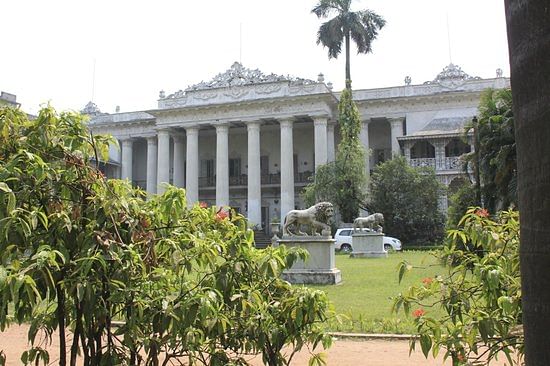Sutanuti, in north Kolkata, was one of the three villages (the other two being Gobindapur and Kalikata) that were merged to form the city of Calcutta. The story dates back to Job Charnock and his chance mid-day halt near the quaint little village of Sutanuti in 1690, where the sparkle of green on the horizon promised repose to a tired British sailor. Take the trail that begins right where the once exclusively European White Town melds into Grey Town and Black Town—the homes of settlers and native Bengalis, respectively. This trail is as much about sights as it is about storytelling. If you are wondering why the name Sutanuti (derived from ‘suta’ meaning yarn and ‘nuti’ meaning bundle), it is because a famous textile workshop and threads market known as Sutanuti Bazar existed here during the British rule.
Start the walk from the Marble Palace. Built in 1835, this home has been described as “the richest, the quaintest, the eeriest, the most haphazard and the most ridiculous, the most astonishing and the most lovable” of the palaces of Kolkata. Along Chitpur Road (Kolkata’s oldest road), you will get a sense of why Kolkata was known as the city of palaces. Marvel at the architecture of Sovabazar Rajbari that represents an ensemble of Hindu, Moorish and colonial traditions. Built by Raja Naba Krishna Deb, Lord Clive's 'Munshi', he was one of the first residents of Kolkata to celebrate Durga Puja in 1757 on a grand scale after the British defeated Siraj-ud-daulah at the battle of Plassey. Though that was aeons ago, standing on the thakurdalan you will inevitably feel the lost grandeur and the abundance of affluence that echoes through the decaying walls. Visit the Jorasanko Thakurbari, where Rabindranath Tagore was born and breathed his last. The building is now a museum, which is a major repository of Tagore’s memorabilia and paintings.
Follow the trail of the city’s historical past along the long-forgotten bylanes of the Bagbazar area. The houses in this locality were built by the Bengali elite but influenced by European architecture. The dilapidated mansions, magnificent archways, lavish verandahs, neglected statues, disintegrated murals, colossal thakurdalans, and opulent dancing rooms, will give you a glimpse into the remnants of ‘babu culture’ (prevalent in old Bengal). While at Bagbazar, you must also take a tour of the renowned Mayer Ghat.
Off Chitpur Road, a narrow lane will take you to the potters’ colony, Kumartoli (ask directions to find your way). On a squalid stretch of the street is a hive of open-air studios where skilled artisans mold some of the finest clay images of gods and goddessess, even exporting some of their creations to Bengalis overseas.


